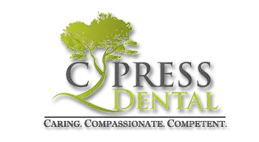My Blog
Pride in Patient Experience
- posted: Oct. 02, 2011
Some of you may recall the former TV show “Cheers.” The opening song said, “where everybody knows your name, and they’re always glad you came.” That is the feeling you Read More
Lowering your risk for tooth decay
- posted: Sep. 13, 2011
Sipping soda or juice all day could be worse than eating a candy bar, because the longer sugar stays in contact with teeth, the greater the risk for tooth decay. Read More
Have No Fear
- posted: Sep. 08, 2011
If you find that you have a fear of going to the dentist, you are not alone. Dental phobia is extremely common. Many people say there is just something different Read More
Meeting New Friends
- posted: Jul. 31, 2011
In a world of text messaging, emails, and computers the art of conversation and personal contact can seem old fashioned. Even though Dr. Smith is at the forefront of dental Read More
A Preventative Strategy
- posted: Jun. 19, 2011
Because we are committed to preventing dental problems before they happen, we recommend that all of our patients see us at least every six months for a routine cleaning and Read More
Do I Need To Replace My Silver Amalgam Fillings?
- posted: May 22, 2011
Amalgam, also known as silver fillings, is a common material that dentists have used for decades to fill cavities. Though it can be argued that amalgam fillings last longer, especially Read More
Cypress Dental, giving back to Northern Nevada
- posted: May 15, 2011
Just completed some more donated dental work through the Nevada Donated Dental Services Organization. Our goal is to empower and inspire our patients to optimal oral health so that they Read More
Digital X-Rays
- posted: May 15, 2011
Dental radiographs (x-rays) are an important part of your dental visit because they help us diagnose problems we cannot see on the surface. Radiographs help us find decay between the teeth Read More
Win an IPad!!!
- posted: Mar. 26, 2011
ATTENTION: Refer & Win an iPad! We want our wonderful patients to help us spread the word about Cypress Dental. So we are giving away an iPad to one lucky patient. Read More
What are the symptoms of TMJ Dysfunction?
- posted: May 15, 2010
The symptoms are diverse and vary from person to person. Common ones include migrain-like headaches, neck or 'tension' headaches. Less common symptoms that may be related to Temporal Read More



